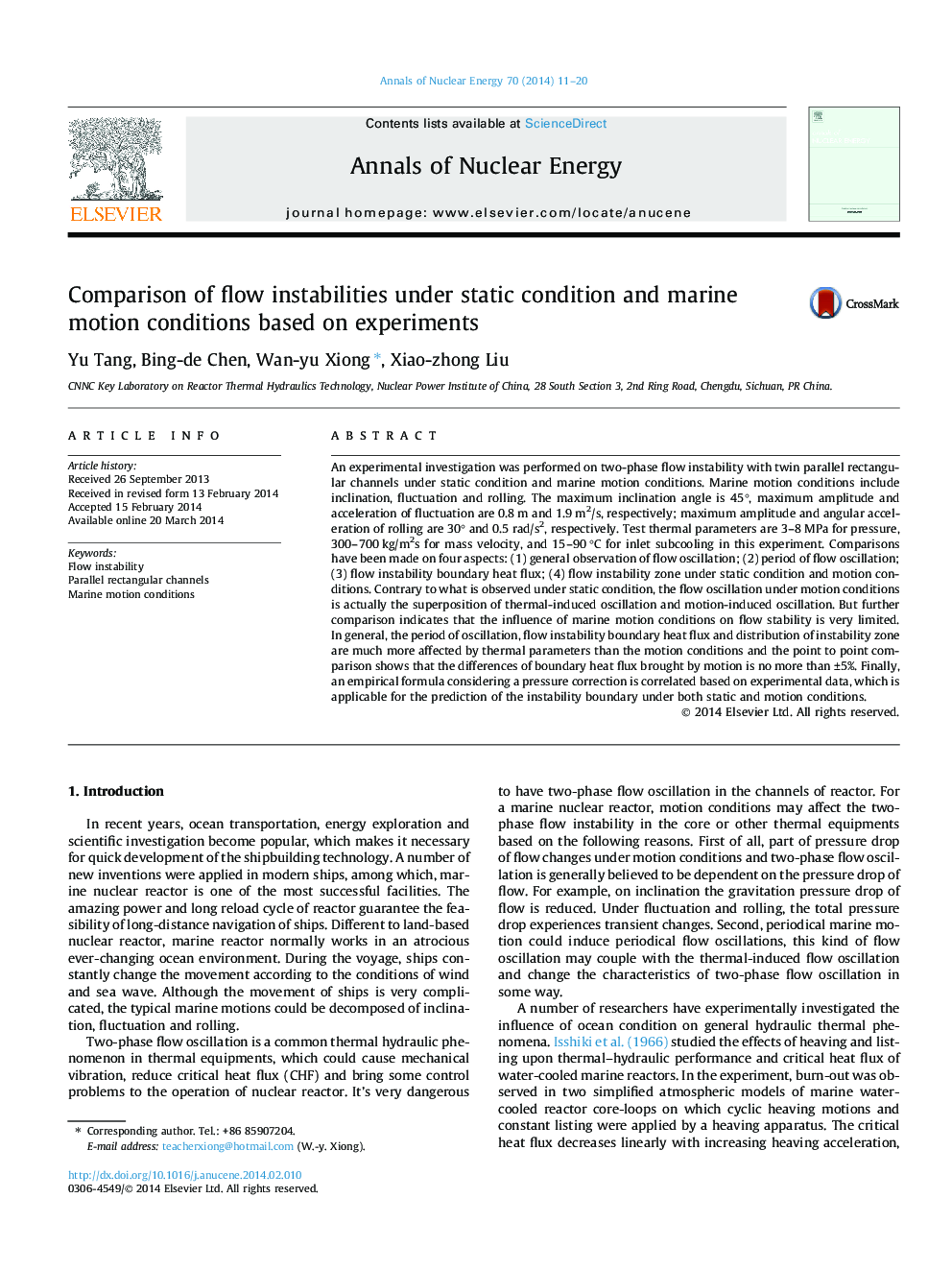| کد مقاله | کد نشریه | سال انتشار | مقاله انگلیسی | نسخه تمام متن |
|---|---|---|---|---|
| 1728303 | 1521128 | 2014 | 10 صفحه PDF | دانلود رایگان |
• Flow instability has been studied under static condition and marine motion conditions.
• Flow oscillation under motion conditions is the superposition of two flow oscillation.
• Effect of marine motion conditions on flow oscillation period is small.
• Effect of marine motion conditions on flow instability boundary heat flux is small.
• An empirical correlation of flow instability boundary was developed based on the results.
An experimental investigation was performed on two-phase flow instability with twin parallel rectangular channels under static condition and marine motion conditions. Marine motion conditions include inclination, fluctuation and rolling. The maximum inclination angle is 45°, maximum amplitude and acceleration of fluctuation are 0.8 m and 1.9 m2/s, respectively; maximum amplitude and angular acceleration of rolling are 30° and 0.5 rad/s2, respectively. Test thermal parameters are 3–8 MPa for pressure, 300–700 kg/m2s for mass velocity, and 15–90 °C for inlet subcooling in this experiment. Comparisons have been made on four aspects: (1) general observation of flow oscillation; (2) period of flow oscillation; (3) flow instability boundary heat flux; (4) flow instability zone under static condition and motion conditions. Contrary to what is observed under static condition, the flow oscillation under motion conditions is actually the superposition of thermal-induced oscillation and motion-induced oscillation. But further comparison indicates that the influence of marine motion conditions on flow stability is very limited. In general, the period of oscillation, flow instability boundary heat flux and distribution of instability zone are much more affected by thermal parameters than the motion conditions and the point to point comparison shows that the differences of boundary heat flux brought by motion is no more than ±5%. Finally, an empirical formula considering a pressure correction is correlated based on experimental data, which is applicable for the prediction of the instability boundary under both static and motion conditions.
Journal: Annals of Nuclear Energy - Volume 70, August 2014, Pages 11–20
